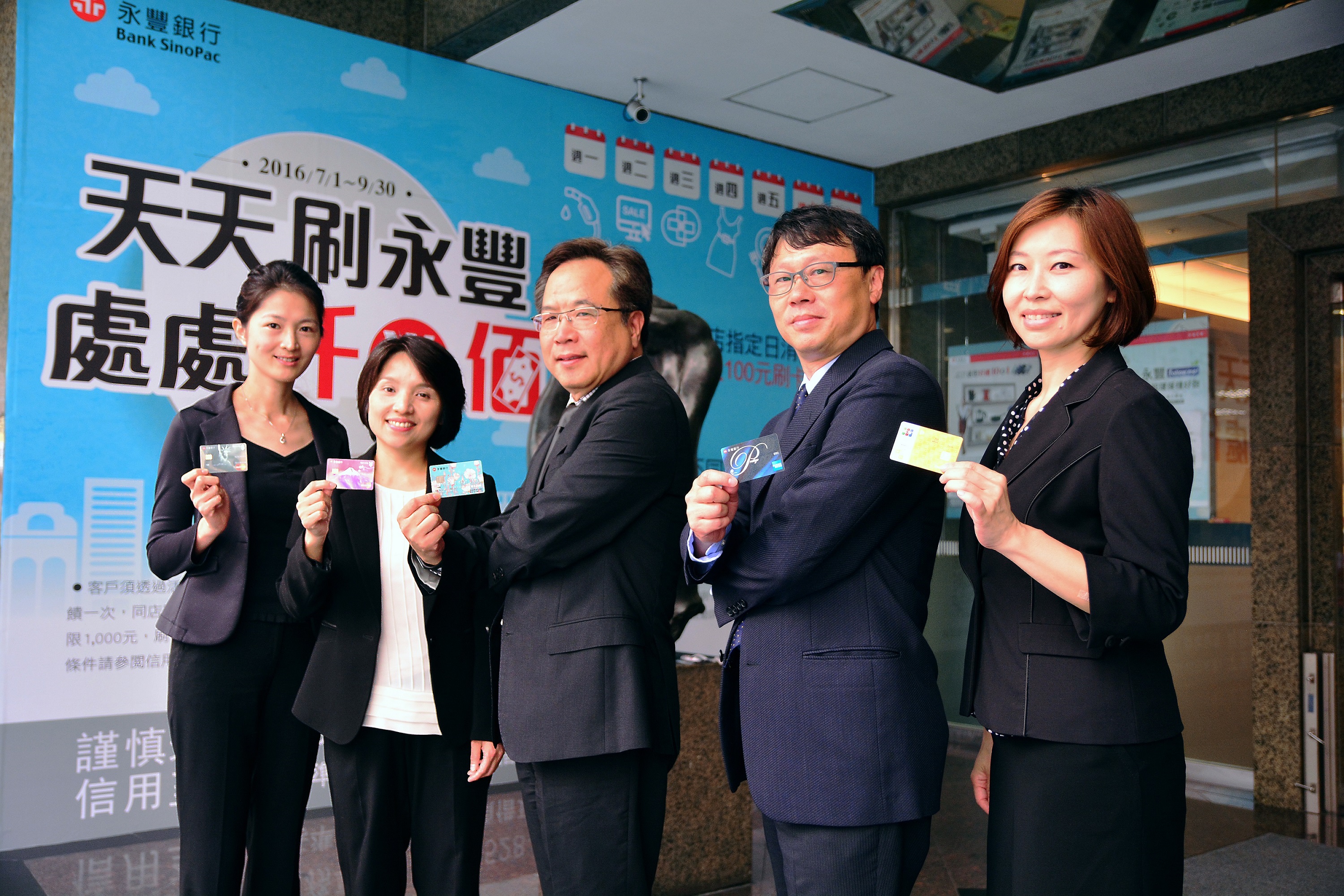In this instalment of the Data Culture Champions in Asia, we take a look at how Wang Wenyu and Cai Ruiting of Bank SinoPac, one of the leading banks in Taiwan, use advanced analytics in a highly competitive consumer credit card market space.

Competition in Taiwan’s credit card market is rife with the over-saturation of card providers, low customer loyalty and low threshold for account transfers. This means that the customer engagement cycle within the consumer financial services space is extremely short.
Banks are investing in a myriad of marketing activities using different approaches and touch points to reach out to customers. In fact, it is not unusual to see multiple marketing activities taking place concurrently, including retail tie-ups and seasonal promotions during payment of taxes and school fees, which sees high usage of credit among Taiwanese. There was an urgent need for Bank SinoPac to better understand customer usage patterns in an agile and timely manner using data.
Microsoft’s recent Asia Data Culture Study found that 88 percent of business leaders in Asia recognize the need to have an agile business that is data-driven in today’s business landscape. However, only 43 percent of respondents believe that their organization is equipped with the corresponding digital strategy today.
Led by Wang Wenyu, Head of Consumer Banking Division and Cai Ruiting, Head of Information Technology Division, Bank SinoPac’s management started to embrace a new data culture and focused on 1) having an agile data infrastructure, 2) ensuring data governance for collaboration, and 3) having an analytical workforce. SQL Server R Services enabled them to tap on and set a benchmark for organizations looking to turn into a more agile business.
Said Wang: “We hope that in the future, we will make use of advanced analytics to better evaluate different marketing activities to ensure that we are investing in marketing resources with the highest returns. As such, the time is now ripe for us to create infrastructure and analytical tools that can increase efficiency and shorten the time required for analysis.”
From analyzing the past to forecasting the future
For enterprises using analytics today, current platforms like Decision Support System (DSS) share what has happened, but not Why or How it happened. With the Why’s and How’s, Bank SinoPac felt it could put together specific activities for targeted audience groups to engage with promotions that they are interested in. For example, by identifying the spending habits of working professionals in Taiwan, the team at SinoPac was able to provide special offers through select channels and entice spending via credit cards.
As the demand for deeper analytics grew within Bank SinoPac, Wang saw the need to prepare the organization’s infrastructure and analytics capabilities for the future. Although the standalone tool that they were using could originally fulfil their current needs, it offered little clarity on the algorithm used, restricting its application to just pre-set functions.
In addition, even though there were more than ten available user logins, analysts could not access the tool simultaneously. Advanced analytics functions such as simulation and data exploration required high compute power and were time consuming processes. Usually, only one analysis scenario could be processed per day, which clearly would not have been sufficient for future demands.

A new framework including Open Source
To tap on more advanced algorithms to meet business requirements, Wang and his team started looking for suitable tools in the open source coding community and found Microsoft R (formerly known as Revolution R).
“The advantages of open source tools are that they offer flexibility, and there are many applications provided by a large user community. However, these tools may not be enterprise-grade and also lack support, which remains a concern. Thankfully, SQL Server 2016 R Services include support for Microsoft R. This allows us to enjoy the benefits of open source tools and an enterprise-grade solution. It also gave us more confidence about future integration and the application of advanced analytics into our existing platforms,” shared Cai.
The performance of SQL Server 2016 R Services during the Proof of Concept phase impressed the team at Bank SinoPac. “The new server-based framework not only provided smooth execution, but the results were better than we expected. The functionalities and outputs delivered through advanced analysis functions such as machine learning, data exploration and multi-dimensional analysis fulfilled our requirements as well,” added Cai.
In short, the analysis team was no longer restricted by the standalone environment and could fully utilize the advanced computing framework. They could compress data sizes by up to 90 percent, which drastically reduced the load on memory.
“A standalone tool is like a one-man army, it is not powerful enough. We can now expand easily in accordance to our needs. Only when tools, framework and manpower are fully aligned can we then apply advanced analytics for each marketing activity. SQL Server 2016 was the most cost effective solution to achieve greater efficiency,” shared Wang.
Moving from a reactive to a proactive stance in the data battle
Bank SinoPac places great importance on data protection and governance. In the past, the standalone tool required data to be analyzed via a front-end computing application. With SQL Server 2016, data storage and computing processes happen within the server, ensuring that sensitive information remains contained in a safe and trusted environment.
Previously, data analysis played a supporting role within Bank SinoPac and was used for a historical view. The ratio of case managers requesting for information versus the analysis team providing information proactively was 9:1. The bank hopes to be able to significantly increase the ratio of cases where information is proactively provided by the research team. Based on the initial trial, SQL Server 2016 R Services can increase the number of cases analyzed by at least two times. Not only can the team complete more analysis requests, it can complete the tasks in a shortened time frame, reducing time to market of marketing activities for targeted consumers.
In the near future, the bank is planning to integrate non-structured information such as contact records and social media content to gather more customer insights.
“At the moment, the focus of the deployment is to better integrate our financial offerings into consumers’ lives,” Cai said. “This is what we see as an integration of digital and reality, which is an increasing requirement in order to attract connected and mobile customers to use our bank services. With this shift in requirements, we foresee the demand for data analytics to grow and diversify at SinoPac in order for us to remain relevant in this competitive market.”

In our Data Culture Champions in Asia series, we profile senior executives across the region who have driven a new data culture within their organization by adopting new processes, technologies as well as enabling their people with skill sets. These individuals cut across key industries and organization sizes, but what makes them stand out above the rest is how they are embracing change. Read more stories of our Data Culture Champions in Asia here.




